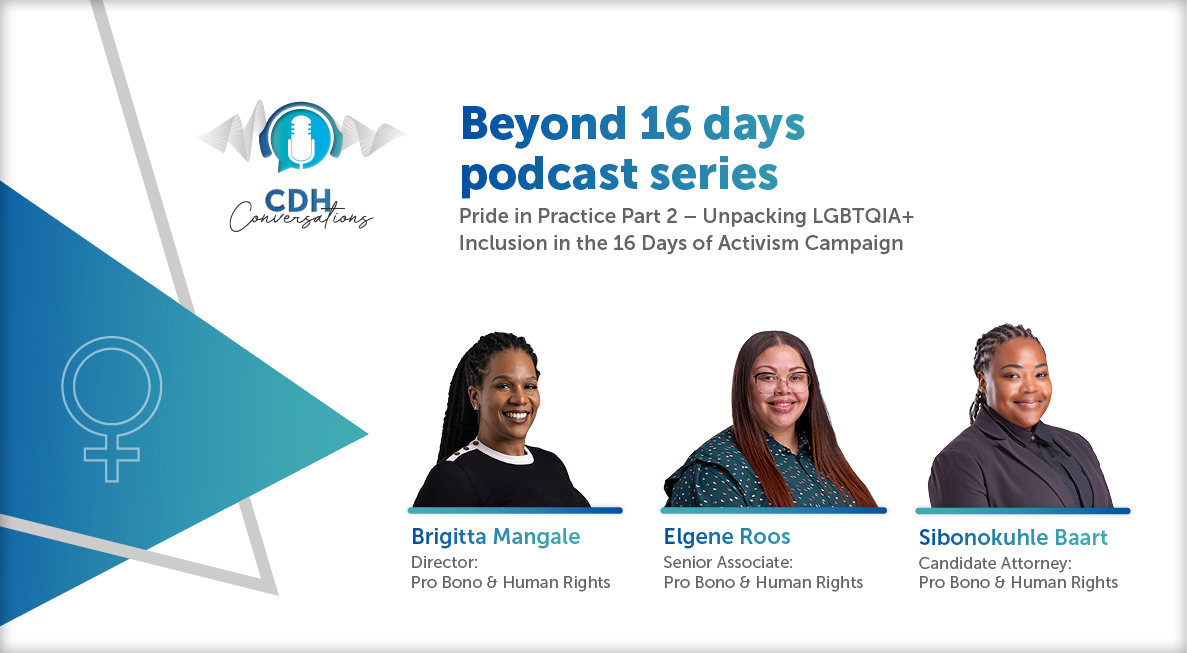Another episode of fabricated citations, real repercussions: South African courts show no tolerance for AI-hallucinated cases
At a glance
- South African courts have delivered another unequivocal warning to legal professionals: presenting AI-generated fictitious citations will result in mandatory referral to the Legal Practice Council, regardless of good intentions, genuine apologies, or mitigating circumstances.
- In Northbound Processing (Pty) Ltd v The South African Diamond and Precious Metals Regulator (Case Number: 2025-072038), the Gauteng High Court reinforced the zero-tolerance approach to fictitious citations in court papers, first established in Mavundla v MEC: Department of Co-Operative Government and Traditional Affairs KwaZulu-Natal and Others [2025] ZAKZPHC 2.
In Northbound Processing (Pty) Ltd v The South African Diamond and Precious Metals Regulator (Case Number: 2025-072038), the Gauteng High Court delivered a clear warning to legal professionals: neither good intentions nor genuine apologies will excuse the fundamental breach of professional duty when lawyers present non-existent cases to court.
The Northbound facts
The case involved an urgent application for interim relief in the form of a mandamus compelling the release of a precious metals refining licence. While Northbound ultimately succeeded in obtaining the relief sought, the judgment took a serious turn when Acting Judge Smit discovered that Northbound’s heads of argument contained fictitious case citations that appeared to have been generated by artificial intelligence. The court determined that the fictitious cases cited in the heads of argument to support key propositions on the mandamus would have been dispositive if they applied but did not, in fact, exist.
Unlike Mavundla, where the legal team struggled to provide satisfactory explanations, Northbound's counsel were comparatively forthright about what had occurred.
The fictitious citations
When Smit AJ discovered the fictitious citations and invited clarification, junior counsel initially claimed an "incorrect version" of the heads was filed due to "confusion [arising] from short-form citations during drafting" and substituted the problematic paragraphs with a "corrected" version. However, opposing counsel then discovered that even this "corrected" version contained two additional incorrect citations, and questioned “whether certain other authority, which does exist, bore out the propositions for which they were cited”.
When probed directly on whether the incorrect citations constituted AI "hallucinations", junior counsel confirmed they "appeared to be so," and accepted full responsibility for the misstep. He explained he had used an AI platform "exclusively trained on South African legal judgments and legislation", and cited the pressure caused by the urgency of the application and the indisposition of the original junior counsel. Attempting to distinguish the case from Mavundla, he argued that senior counsel didn't rely on the non-existent cases in oral argument, no one was prejudiced, and that there was no intent to mislead.
In turn, senior counsel apologised unreservedly and explained he had only done a "sense-check" without verifying citations.
Different response, same outcome
The stark difference between the two cases lies in how each legal team responded when confronted.
In Mavundla, the legal team attributed errors to a candidate attorney, provided unsatisfactory explanations, and the candidate attorney denied using AI when questioned, potentially compounding negligence with dishonesty.
In contrast, in Northbound, counsel acknowledged the use of AI, accepted full responsibility, emphasised there was no intent to mislead, and apologised unreservedly to the court.
Despite these very different responses, both courts reached the same conclusion; a referral to the Legal Practice Council for investigation.
To this end, our courts have made clear that professional standards remain unchanged, regardless of the tools used, and that neither time pressure nor the use of new technology can excuse a failure to verify legal authorities.
International precedent: the Ayinde principles
Borrowing from English High Court in Ayinde v The London Borough of Haringey; Al-Haroun v Qatar National Bank QPSC [2025] EWHC 1383, Smit AJ emphasised that the risks of using AI in legal research are now well known, as such tools can produce coherent and plausible responses that are entirely incorrect, citing non-existent sources, or fabricating quotations. Those using AI for legal research have an absolute professional duty to check accuracy against authoritative sources before using such research professionally, as misuse of AI has serious implications for the administration of justice and public confidence in the legal system. It is also worth emphasising that providing legal advice to clients without properly verifying the sources cited by an AI-generated platform can prejudice clients, result in incomplete or flawed advice, and harm the reputation of both the advising attorney and the client who acts on it.
Courts possess extensive powers including “public admonition of the lawyer", and where lawyers place false citations before courts, this likely involves a breach of ethical requirements making regulatory referral appropriate.
Critically, Smit AJ not only endorsed the principles adopted in Ayinde but stated that they “apply with equal force in South Africa”. This deliberate alignment with international best practice and a recognition that the risks of AI in legal research are now well known globally.
Mandatory judicial referral obligations
Despite the Northbound case involving an urgent application with severe time pressures, the court made clear this does not excuse professional negligence.
Rather, Smit AJ highlighted that "the risks posed to the administration of justice if fake material is placed before a court are such that, save in exceptional circumstances, admonishment alone is unlikely to be a sufficient response".
He then emphasised that referral to professional bodies is not discretionary but mandatory in appropriate cases, referring to Article 16(1) of the Code of Judicial Conduct, which "obliges a judge with clear and reliable evidence of serious professional misconduct or gross incompetence on the part of a legal practitioner to inform the relevant professional body of such misconduct".
Key takeaways for practitioners
The courts are not necessarily discouraging the use of AI in legal practice. Instead, they are calling for practitioners to adapt their verification processes and maintain rigorous standards of accuracy and integrity as technology evolves. Any failure to meet these standards will be borne by the practitioners. The fundamental duty to present accurate authorities to courts remains inviolable, and practitioners must adapt their verification processes accordingly.The Northbound judgment offers legal practitioners both guidance and a warning: you may draw upon AI's potential, but do so with constant vigilance, rigorous verification, and unwavering commitment to professional integrity.
- Always use sound and reliable legal platforms and publications for sources, case law and references relating to, for example, case law and statutes
- Methodically review AI-generated outputs before relying on the content
- Never use AI tools without first understanding their limitations and associated risks
- Choose AI tools that are transparent about their limitations and actively promote verification protocols
- Recognise that time pressure, urgency, or any other circumstances will not excuse professional negligence
The information and material published on this website is provided for general purposes only and does not constitute legal advice. We make every effort to ensure that the content is updated regularly and to offer the most current and accurate information. Please consult one of our lawyers on any specific legal problem or matter. We accept no responsibility for any loss or damage, whether direct or consequential, which may arise from reliance on the information contained in these pages. Please refer to our full terms and conditions. Copyright © 2025 Cliffe Dekker Hofmeyr. All rights reserved. For permission to reproduce an article or publication, please contact us cliffedekkerhofmeyr@cdhlegal.com.
Subscribe
We support our clients’ strategic and operational needs by offering innovative, integrated and high quality thought leadership. To stay up to date on the latest legal developments that may potentially impact your business, subscribe to our alerts, seminar and webinar invitations.
Subscribe




